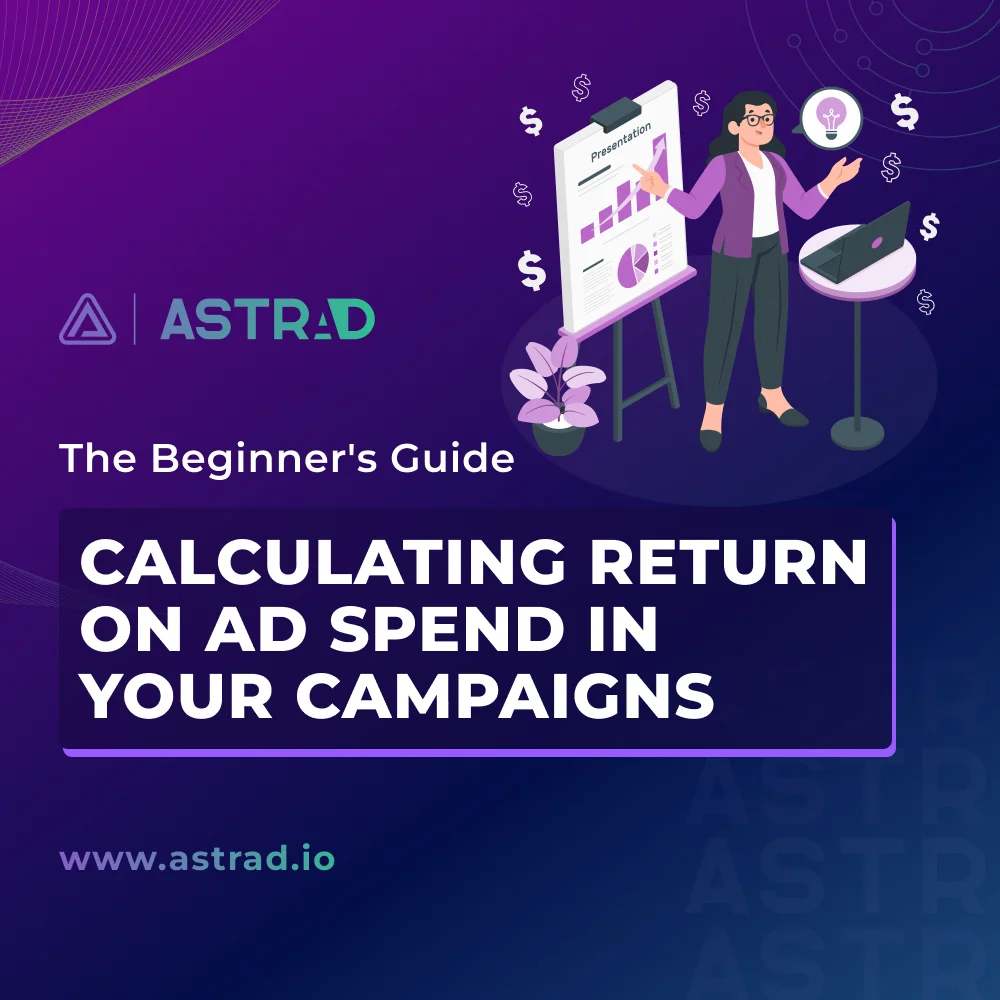Let’s talk turkey and give beginners a clear grasp of ROAS calculation — the tools they will need to properly analyze advertising campaign performance. This data-driven approach enables them to optimize campaigns for maximum return on investment, leading to better financial results and strategic marketing decisions.
Return on Ad Spend (ROAS) — The Skinny
In digital marketing, ROAS (return on ad spend) is a crucial metric that tells you how much revenue your advertising campaigns generate for every dollar you invest. By calculating ROAS, you can judge the effectiveness of your campaigns and see if they’re bringing in enough money to justify the spending. This data is essential for optimizing your advertising strategy, allocating budgets efficiently, and ultimately maximizing your return on investment.
Importance of Measuring ROAS
Measuring ROAS is vital for effective campaign management because it acts as a financial compass. Without understanding how much revenue each ad dollar generates, you’re essentially flying blind. ROAS allows you to identify high-performing campaigns that deserve more budget, while flagging ones that are draining resources. This data-driven approach empowers you to optimize campaigns in real-time, and maximize your return on investment, steering your marketing efforts towards financial success.
What is ROAS?
Return on ad spend (ROAS) is a key metric in digital marketing that measures the advertising effectiveness of your campaigns. It basically shows how much revenue you generate for every dollar you spend on advertising. To calculate ROAS, simply divide the total revenue generated by your campaign by the total cost of the ads. The higher the ROAS, the more revenue you’re earning for each dollar invested, signifying a successful campaign.
Difference Between ROAS and Similar Metrics
ROAS and ROI (Return on Investment) are both important metrics, but they offer different perspectives on your financial performance. Here’s the key difference:
- ROAS (Return on Ad Spend): Focuses specifically on advertising campaigns. It tells you how much revenue you generate from your ad spend. It’s a ratio or a percentage that reflects the efficiency of your advertising dollars. ROAS doesn’t take into account other costs associated with the product or service being advertised.
- ROI (Return on Investment): This is a broader metric used to assess the overall profitability of any investment, including marketing campaigns. It considers all the costs associated with your product or service, not just advertising spend. ROI is typically expressed as a percentage and is calculated by dividing the net profit by the total investment.
Setting Clear Objectives Before Calculating ROAS
Before diving into ROAS calculations, setting clear objectives for your advertising campaign is crucial. By defining clear objectives upfront — brand awareness, lead generation, and sales — you establish the specific benchmarks for evaluating ROAS. Clear objectives ensure you’re interpreting ROAS data in the right context, making optimization decisions that align with your campaign’s true purpose. Without clear objectives, a high ROAS might be misleading if it doesn’t translate into achieving your desired outcome.
The Preparation to Calculate ROAS
Calculating ROAS effectively requires some pre-campaign prep work. First, establish clear and measurable goals for your advertising campaign. Next, meticulously track both your advertising spend and the revenue generated from the campaign. Utilize tools offered by your advertising platforms or implement a system to accurately attribute sales to your ad efforts.
Finally, define the timeframe for your campaign. ROAS is typically measured over a specific period, so ensure you have all the data for that timeframe to get a clear picture of your advertising performance.
Which Data Points are Essential for Calculating ROAS?
Consumers crave customized experiences. They expect ads to be releva
When calculating ROAS, there are two crucial sets of data points you need to collect:
- Advertising Spend: Represents the total investment you’ve made in your advertising campaign:
- Platform Fees: Include any fees charged by the advertising platform you’re using.
- Cost-Based Charges: Track costs associated with different pricing models used in your campaign. This might include:
- Cost per Click (CPC): This is the amount you pay each time someone clicks on your ad.
- Cost per Thousand Impressions (CPM): This is the cost you pay for every thousand times your ad is displayed.
- Other fees associated with setting up or managing your campaign on the platform.
- Revenue Generated: Reflects the income your campaign has generated:
- E-commerce: For online stores, track sales directly linked to your ad campaigns.
- Coupon Codes: Utilize unique coupon codes specific to your ad campaign to identify sales generated through those ads.
- Lead Generation: Track leads generated through forms or landing pages linked to your ads.
- Brand Awareness: Track website traffic or brand mentions that spike after your campaign launch. While not a direct revenue figure, this data can indicate the success of your brand awareness efforts.
Tips on Collecting Comprehensive and Accurate Data
- Planning is Key: Define clear goals for your campaign upfront — sales, leads, and brand awareness. This sets the context for what data is most relevant to track.
- Embrace Automation: Utilize built-in tracking features offered by advertising platforms like Google Ads or Facebook Ads Manager.
- Integrate Analytics: Integrate website analytics tools like Google Analytics to track website traffic, conversions, and revenue generated from your ads, providing a more holistic view.
- Standardize Tracking: Ensure consistent tracking methods across all platforms and campaigns.
- Maintain Clean Data: Regularly review your data for errors or inconsistencies.
Step-by-Step Guide to Calculating ROAS
Gather Your Data
Before crunching the numbers, include all the costs related to your advertising spend and the revenue generated from it.
Choose Your Calculation Method:
- ROAS as a Ratio: This is the most common method and expresses your return on investment as a ratio. Here’s the formula:
- ROAS as a Percentage: This method presents your return on investment as a percentage. Simply multiply the ROAS ratio by 100%.
Apply the Formula:
ROAS = Total Revenue Generated / Total Advertising Spend
How to Interpret Different ROAS Values?
Here’s a breakdown of what different ROAS values might indicate:
High ROAS — Generally above 5
Suggests a very successful campaign. You’re generating a significant amount of revenue for each dollar spent on advertising.
Moderate ROAS — Around 3-5
This is a healthy range for many campaigns, indicating a good return on ad spend. You’re generating enough revenue to cover your advertising costs and likely see some profit.
Low ROAS — Below 3
This suggests your campaign might not be as efficient as desired. You’re generating less revenue than your ad spend, potentially leading to losses.
What Constitutes a Good ROAS and Industry Benchmarks
A good ROAS depends on a few key factors:
- Industry: Average ROAS can vary significantly between industries. Research benchmarks specific to your industry to understand what’s considered good performance.
- Campaign Goals: A “good” ROAS also depends on your campaign’s objectives. For direct sales campaigns, a higher ROAS is generally desired. For brand awareness campaigns, a lower ROAS might be acceptable if it achieves goals like increased brand mentions or website traffic.
- Business Profit Margins: Even with a high ROAS, a business with low profit margins might still need to optimize to ensure overall profitability.
Getting Your Hands on ROAS
Understanding ROAS is crucial for business success. It helps you measure the effectiveness of your advertising efforts, ensuring you’re not pouring money into campaigns that don’t deliver. By calculating ROAS, you can identify high-performing campaigns, optimize struggling ones, and maximize your return on investment.
This guide provides a solid foundation, but remember a good ROAS depends on your industry and goals. Don’t stop here. Dive deeper into industry benchmarks and analyze your profit margins to refine your understanding. So, take charge of your advertising success — start calculating your ROAS today and watch your campaigns flourish.






